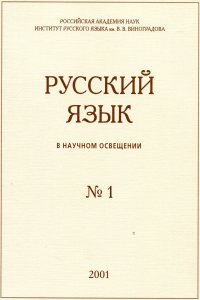Re-reading pluperfect: a new overview of the examples of pluperfect in birchbark letters
Abstract:
The paper proposes an analysis of all the 10 examples of pluperfect in the Novgorod birchbark
letters of the 12th-15th centuries within the context of other Old East Slavic texts of
the period, including new epigraphical findings. These findings corroborate our earlier idea,
co-authored with Pavel Petrukhin, on difference in semantics between the pluperfect forms
with different auxiliaries. Half of the birchbark examples are re-interpreted with particular attention
to the semantics of "disturbance of the natural flow of events,” which should not be
confused with "cancelled result." For parallels, contexts from other sources with cognate
and/or synonymous verbs are invoked: they mutually contribute to the interpretation of close
contexts. In some cases, a new interpretation of the pluperfect form brings a new treatment of
the wider context. It is demonstrated that the polysemy of the Middle Russian pluperfect, and,
mutatis mutandis, of the bylo particle in Russian was already there in the 12th century and had
almost certainly developed by the 11th century. The problem of the interrelation between the
supercompound form (with the auxiliary byl-) and aspect in Old East Slavic texts is also discussed.
It is found that the distribution of perfective and imperfective forms in the birchbark
letters (9 perfective vs. 1 possibly imperfective, this one being chronologically the last) corresponds
to the general tendency of co-occurrence of the pluperfect with the perfective aspect
(hitherto largely unnoticed).


